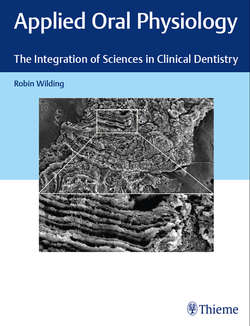Читать книгу Applied Oral Physiology - Robin Wilding - Страница 16
На сайте Литреса книга снята с продажи.
2.2 Pulp–Dentin: Clinical Aspects
ОглавлениеThe pulp–dentin is a highly vascular loose connective tissue surrounded by a component of calcified connective tissue, the dentin. Although there are very obvious structural differences between pulp and dentin, the following reasons suggest they be treated as an integrated complex.
• During tooth development dentin is formed by odontoblasts of the pulp. After tooth development, peritubular and secondary dentin continue to be formed by the pulp odontoblast.
• The sensitivity of dentin depends on the presence of odontoblasts.
• The capacity of dentin to respond to irritation such as tooth wear, or dental caries, depends on odontoblasts.
• Both sensitivity and response to irritation are directly affected by the state of the entire pulp tissue.
• From an operative point of view, any procedure involving dentin is a procedure involving the pulp; any material or medication placed against dentin is a material or medication placed against the pulp.
